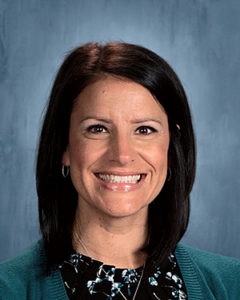As human beings, we are hardwired for connection. We chose to be educators with the intention of impacting the lives of our students through the relationships we build. Yet, as an assistant principal, I often find myself buried in my never-ending to-do lists, which has unfortunately led to missed opportunities to connect with my staff and students. I have challenged myself to adjust my daily routine, creating space to connect. I have discovered that by committing to a few simple strategies each day, I can connect with staff and students significantly more than before.
Welcoming Committee
Our principal, members of our counseling staff, and I all hold the door for our staff and students as they come in each day. We offer a quick “Good Morning!” as each person passes by. This simple gesture has given me the opportunity to notice changes like a new haircut, a pair of shoes, or a fun backpack or sweatshirt and offer a compliment.
2×10 Strategy
I first learned about this strategy when I began digging deeper into restorative practices. At its core, the 2×10 Strategy is about relationships and connection. Ideally, educators spend two minutes a day for 10 school days talking to a student about anything unrelated to school. This strategy can be used with a student who thrives on adult interaction, one who needs extra SEL support, or a student struggling with making positive choices during the day. At Holly Middle School (HMS), we have 11 new staff members this year. As a way to connect, I have adjusted the 2×10 strategy by being intentional in getting to know our staff. Every two weeks, I choose two or three staff members to engage in meaningful conversations with for a few minutes each day. I try to steer clear of conversations centered around school and simply get to know the staff as individuals; this strategy has offered great insight into their worlds and has created a sense of connectedness.
Operation: Lunchroom
While it is embarrassing to admit this, in my first few years as an assistant principal, I dreaded lunchroom supervision. And while it is hard to step away from other responsibilities, the two hours I spend each day in the lunchroom have given me a priceless opportunity to build relationships with students. Being at the doors leading to the lunchroom and stopping at lunch tables to share quick conversations has created rapport with students—something I missed out on when I viewed my role only as “supervisor.” I am now much more aware of students who may be struggling with peer relationships and those who may lack a sense of belonging. I also get to celebrate their big games or choir concerts from the previous night.
Walk the Halls
One of my favorite district-provided resources has been a standing mobile desk. The desk has allowed me to continue working on important responsibilities, while providing a mobile workspace that does not keep me locked up in my office hour-by-hour. In the halls, I can chat with a student or staff member, ask how they are doing, and then move to a new location to connect with a new set of faces. It has also enabled me to get into classrooms in a more informal setting than during classroom observations, so I can see real-time teaching and leave positive feedback for teachers and ask students about their in-the-moment learning.
Build in Regular Opportunities for Social-Emotional Learning (SEL) and Check-Ins
As we maneuvered our way through the 2020-21 school year, it became even more evident how much SEL needed to be a top priority for our staff as well as our students. We started bi-weekly SEL check-ins where students used the Mood Meter to identify the strongest emotion they were feeling in that moment. We also began creating self-care calendars and bi-weekly question prompts such as, “What would help you right now?” We provided choices for students such as a counselor check-in, a lunchtime conversation, or a walk during the school day, etc.
For our staff, building in opportunities for yoga, restorative circles, and mindfulness helped create space for self-care and connectedness that we did not previously have. We now start our staff meetings with a mindful minute or a check-in on the Mood Meter. Through these activities, we are increasing our staff SEL toolbox, but also learning things we would never have known about each other.
Lastly, we have started Monday morning check-ins using Google Forms with our staff. These, too, have provided us with opportunities to build connections and gain insights into how we might support our staff during the day. Through these surveys, we discovered that something as simple as a beverage/snack cart helped our staff feel supported and gave them a much-needed boost. Getting out of my office, increasing my level of visibility, and connecting SEL to staff and students has been, by far, the greatest gift I have given to myself. It has recentered my “why” and has helped me to connect in ways that I could not have imagined before adjusting my daily routine. We all benefit from connectedness, and these simple strategies have truly changed the game for me here at HMS.

